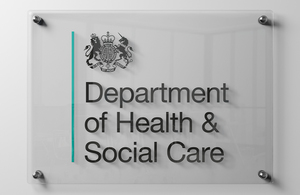Statistical Press Notice: National Diet and Nutrition Survey -Assessment of dietary sodium levels in adults (aged 19 to 64 years) in England, 2011
Today, the Department of Health (DH) published a report on dietary sodium intakes, based on an assessment of the sodium content of urine samples…

Today, the Department of Health (DH) published a report on dietary sodium intakes, based on an assessment of the sodium content of urine samples collected from July 2011 to December 2011 from a representative sample of 547 adults.
This report continues a series of urinary sodium surveys across the general adult population inUnited Kingdomcountries since 2000/01. The results are used by government to monitor progress towards the recommended maximum salt intake for adults of no more than 6g per person per day.
The great majority of sodium intake is in the form of salt. Salt intake can be estimated by measuring urinary sodium excretion, which closely reflects an individual’s sodium intake.
Key findings
- The mean estimated salt intake, derived from urinary sodium excretion, for adults aged 19 to 64 years was 8.1g per day. Men had a mean estimated intake of 9.3g per day, and women had a mean estimated intake of 6.8g per day
- Overall, 70% of participants had a daily intake of salt higher than the recommendation of no more than 6g per day. 80% of men and 58% of women exceeded this recommendation
- An analysis of trends in salt intake (g per day), including all urinary sodium surveys carried out in UK countries between 2000/01 and 2011, showed a significant downwards trend in mean salt intake overall and also for both men and women separately
- Statistical analysis showed there has been a significant reduction in mean salt intake between 2000/01 and 2011 from 9.5g to 8.1g per day
- The drop in estimated salt intake in 2011 compared with the previous estimate in 2008 was not statistically significant
The full statistical release, including a summary, can be found on the Department of Health’s website.
Contacts
To contact the Media Centre, please refer to the Department of Health’s website for the relevant contact details.
Notes to Editors:
- In 2003 the Department of Health and the Food Standards Agency (FSA) launched a nationwide salt reduction initiative to reduce the UK population average salt intake to 6g per day. Voluntary targets for the food industry to reduce salt in 85 categories of food were introduced by FSA in 2006 for completion in 2010. These targets were revised in May 2009, to be achieved by 2012. The salt reduction programme was transferred to DH with other public health nutrition responsibilities in 2010 and has since been included within DH’s Public Health Responsibility Deal (http://responsibilitydeal.dh.gov.uk/). The salt commitments made by the food industry in the Responsibility Deal are based on the previously set 2012 targets.
- Participants in the survey reported here were all aged 19-64 years, living in private households inEngland. They included participants in the National Diet and Nutrition Survey (NDNS) between July and December 2011, augmented by further participants recruited through a random digit telephone dialling method.
- The NDNS is jointly funded by the Department of Health in England and the UK Food Standards Agency (FSA) and carried out by a consortium of three organisations: National Centre for Social Research (NatCen Social Research) MRC Human Nutrition Research (HNR) and the University College London Medical School (UCL).The England sodium boost sample was funded by Department of Health and carried out by NatCen Social Research and MRC HNR.
- The previous six sodium levels surveys carried out within theUKfrom 2000/1 to 2009 are: * NDNS 2000/01 (GB)[1] * EnglandSodium Survey 2006 [2] * Scottish Health Survey Sodium Survey 2006[3] * WalesSodium Survey 2007[4] * UKSodium Survey 2008[5] * Scottish Health Survey Sodium Survey 2009[6]
5. Sodium intake was converted to salt using the equation: 17.1 mmol of sodium = 1g salt and assumes all of the sodium was derived from salt
[1] Henderson L, Irving K, Gregory J, Bates CJ, Prentice A, Perks J, Swan G, Farron M. National Diet and Nutrition Survey: adults aged 19 to 64 years. Volume 3: Vitamin and mineral intake and urinary analytes. London: The Stationery Office, 2003.
[2] National Centre for Social Research. An assessment of dietary sodium levels among adults (aged 19-64) in the general population in England, based on analysis of dietary sodium in 24-hour urine samples. 2006.
[3] National Centre for Social Research. A survey of 24-hour and spot urinary sodium and potassium excretion in a representative sample of the Scottish population. 2006.
[4] National Centre for Social Research. An assessment of dietary sodium levels among adults (aged 19-64) in the general population in Wales, based on analysis of dietary sodium in 24-hour urine samples. 2007.
[5] National Centre for Social Research. An assessment of dietary sodium levels among adults (aged 19-64) in the UK general population in 2008, based on analysis of dietary sodium in 24-hour urine samples. 2008.
[6] Scottish Centre for Social Research. A survey of 24-hour urinary sodium excretion in a representative sample of the Scottish population as a measure of salt intake.